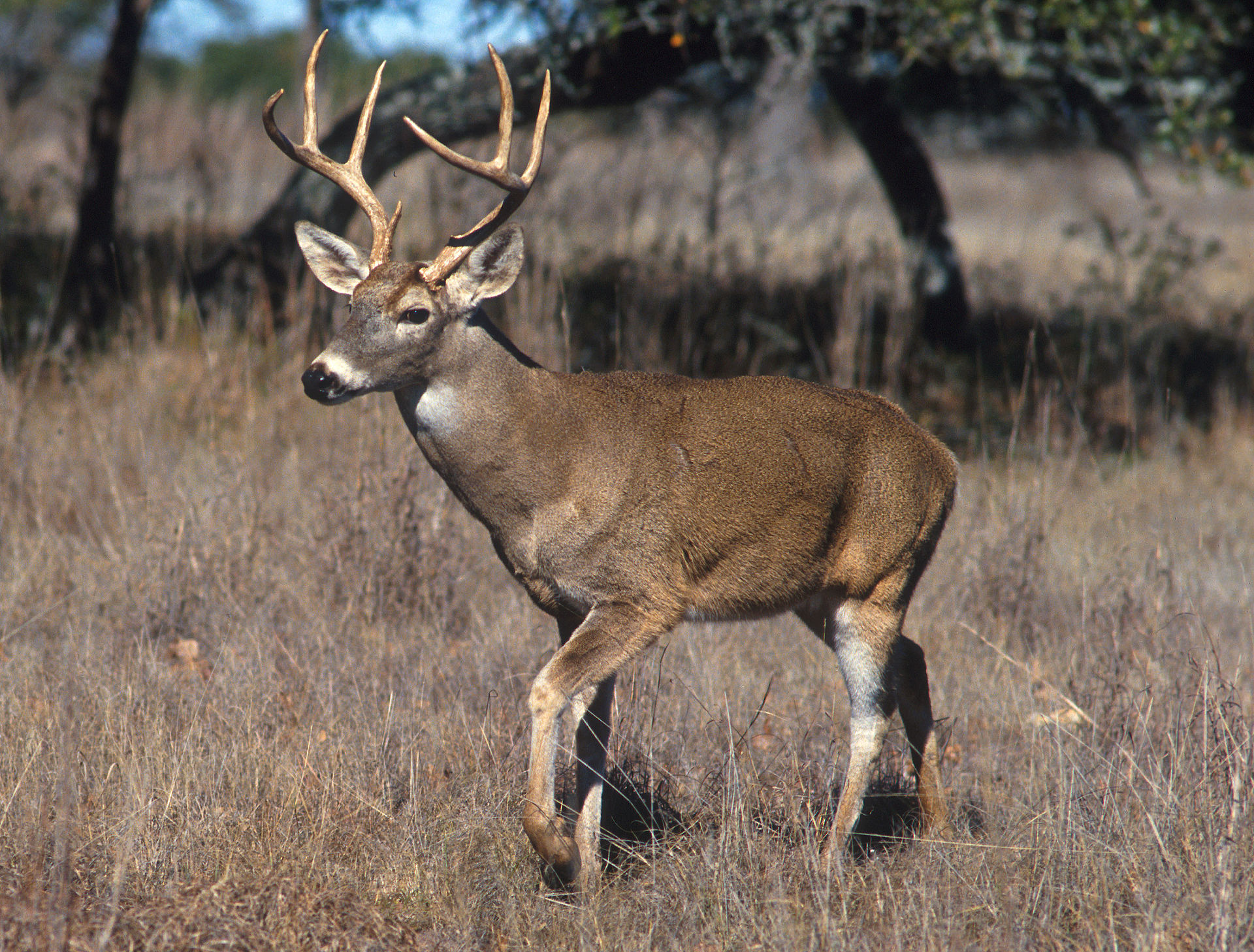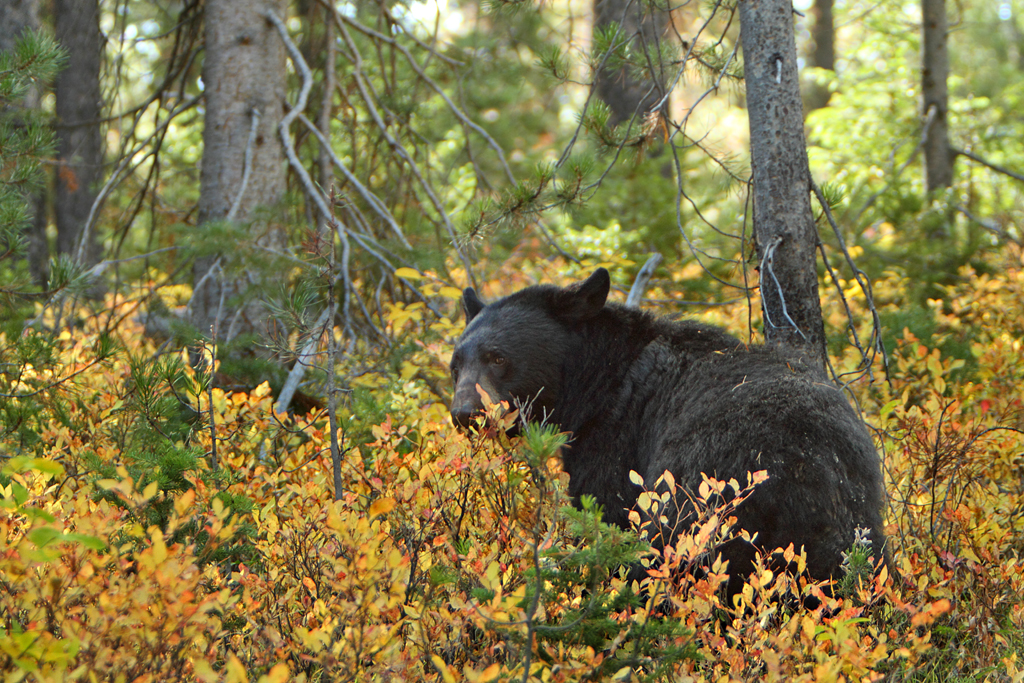Hunting in Iron
County Michigan
Hunt Whitetail Deer, Black Bear,
Wild Game & More
Hunt Prime Forestland and Waterways
Michigan has a long, rich history in hunting. Many hunters come for the sport & trophies, but hunting also contributes to wildlife management and conservation, provides a positive family experience, and is good for the economy. The sportsman is in no want for wild game in Iron County! White tail deer, turkey, black bear, and upland birds and waterfowl are all fair game.
Licenses are available for purchase at convenience stores, and rules and regulation information can be found online. Hunters have opportunities to harvest a trophy white-tailed deer and daily bag limits of grouse, woodcock and waterfowl. With more than 425,000 acres of public land open to hunters, and vast miles of roads and hunting trails offering easy access to prime locations.
Whitetail Deer Hunting
Antlered: a deer having at least one antler that extends 3 inches or more above the skull.
Antlerless: a deer without antlers, or antlers extending less than 3 inches above the skull.
Antler Point Restriction (APR) is a tool used to protect an age class of bucks from being harvested in order to graduate them to the next age class by only allowing hunters to harvest bucks with a certain number of antler points on a side. Hunters must choose at the time of purchase if they want the opportunity to harvest one or two antlered deer. Hunters wishing to harvest only one antlered deer can purchase a single deer license (one kill tag). Hunters wishing to harvest two antlered deer must purchase a deer combo license (two kill tags).
Deer License
A deer license may be used to harvest an antlered deer. This tag is not valid for the early/late antlerless firearm seasons. Those who purchase a single deer license may not purchase a second single deer license or the deer combo license.
(Information retrieved from the Michigan DNR Hunting Digest)

Iron County Upland Bird & Waterfowl Hunting
Woodcock, ruffed grouse, partridge, and a variety of duck species can all be found throughout the Iron County Area. With over 42,000 acres of lakes, area ducks and geese thrive. Dubbed one of the best ruffed grouse hunting areas by the Ruffed Grouse Society, the opportunities are endless within all of our forests. One of the major contributors to the area’s success is the fact that half of our forests are full of aspen – the perfect habitat for grouse and woodcock.
Acording to the Michigan DNR, When you purchase a waterfowl hunting license, you are also contributing to wetland conservation in Michigan. Nine dollars of each license goes directly toward wetland protection, restoration, and enhancement of wetlands and other
lands to be managed for the benefit of waterfowl. An additional $1.93 of every license is used to operate, maintain, and develop managed waterfowl areas in Michigan.
Wild Turkey Hunting In Iron County Michigan
A wild turkey is an exciting bird to hunt. For a long time, turkey experts said that wild turkeys could never survive a winter in the north. In spite of the experts, in 1994 Wildlife Unlimited launched a project to introduce the wild turkey into Iron County. The project was so successful with an estimated population of 3,000 birds and spring & fall hunt seasons!
According to the Michigan DNR, from Jan. 1 – Feb. 1, hunters may apply for one limited-quota license, for a specific spring turkey hunt unit and season dates. Application fee is $5. Applicants selected in the drawing may then purchase a limited-quota license online at mi.gov/turkey or at a license agent. After the drawing, any leftover licenses will be sold until quotas are met. It is unlawful to obtain or purchase more than one spring turkey hunting license.
Depending on how many hunters apply, leftover licenses may or may not be available for some hunt units and/or dates. Hunters who do not apply for the drawing may purchase a leftover license, if available, beginning March 20 (see pg. 13). The $5 application fee will not be charged (only applies to drawing participants).

Black Bear Hunting
According to the Michigan DNR, bears likely have been in Michigan since the melting of the last glacier. Until European settlement, bears existed throughout the state in areas with forested habitat. Bears typically were treated as pests by early European settlers arriving in Michigan and were unprotected in the state until 1925. Since 1925, hunting has been part of the bear management program, with many different season structures. The majority of the bear population resides in the Upper Peninsula, where large tracts of state, federal, and private commercial forest lands contain good to excellent bear habitat.
The black bear population in Iron County is healthy and especially near Amasa, Michigan. Applications for hunting tags must be submitted between May 1st and June 1st. To learn more, visit www.michigan.gov/dnr.

